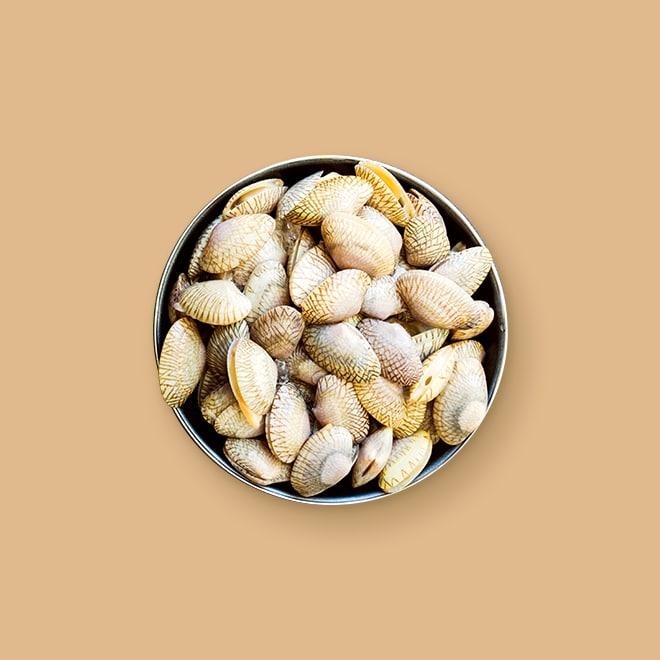Clam




Clams are bivalves that spend most of their life buried in the ocean floor. They are highly valued as food and one of the most sustainable forms of seafood. The hardshell clam is among the longest-lived animals; one was estimated to be between 405 and 410 years old in 2007.
The soft-shell clam found on both coasts of North America, is one of the most popular eating clams. The hard-shell clam, also known as the northern quahog, is abundant from the Gulf of St. Lawrence to Texas. Native Americans used parts of the shell from these bivalve mollusks to make wampum — beads used for barter, ornamental, ceremonial and spiritual purposes
When buying clams in their raw state, they should feel heavy for their size.
Clam shells should be tightly closed, with no chips or cracks present. An open shell indicates that the creature is already dead and will have begun to decompose.
Like all seafood, clams should smell of the ocean — briny and sweet, like seaweed — and not off-putting or "fishy" in any way.
When storing clams, place them in a bowl and cover with a damp towel. Do not submerge them in water. You can surround the container in ice, but do not submerge them in ice.
Scientist found a way to harvest energy from clams to power an electric motor- the amount of energy harvested depended on the clams health.
Clams have been known to absorb certain chemicals- and can keep water sources clean. When Californian researchers put clams and mussels to the test, these bivalves removed 80% of contaminants.
In many species of giant clam, photosynthetic algae live in the clam’s fleshy mantle, which is exposed to the sea and sunlight through the flaps of its shell. In exchange for their home, the algae secrete glycerol, which feeds the clam.
Freshwater clams produce natural pearls and quahog clams produce quahog pearls.
The steam-method for cooking clams is excellent for cooking small to medium-sized varieties of clam.
All clams should be cooked gently to prevent toughening.
Clams are ready when the shells will open wide. Cooking time depends on the size of the clam and can be anywhere from 3 to 10 minutes.
After the clams are done, you can use the cooking liquid to make a delicious sauce. Add a large spoonful of butter or heavy cream, bring to a boil and cook for a few minutes to reduce. Pour over shellfish and serve.
One of our favorite ways to make clams is to cook them in a mixture of butter, garlic, and white wine. Serve with a side of crusty bread and you have an excellent and simple dish.
Clams are high in protein and contain fair amounts of calcium and iron.
Clams are surprisingly high in iron. So high, in fact, that t-bone steaks and beef liver don't compare. A three-ounce serving of cooked clams, or about nine small clams, has about 24 milligrams of iron.
Clams contain about 140 milligrams of omega-3 fatty acids per 100 grams (about 3 1/2 ounces.)
Corrections or improvements? Email us at
content@sidechef.com